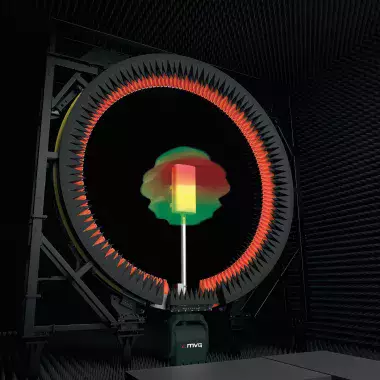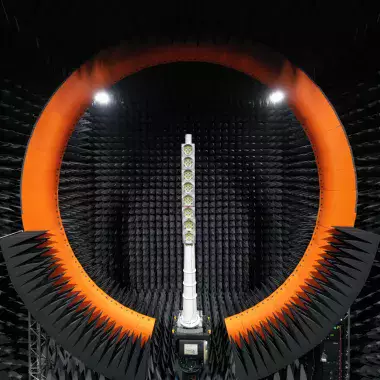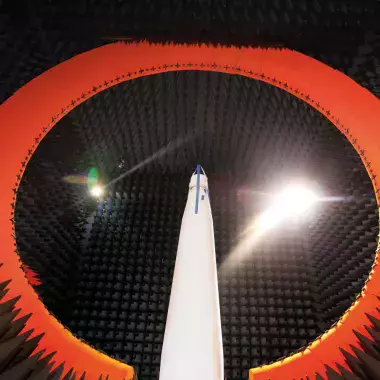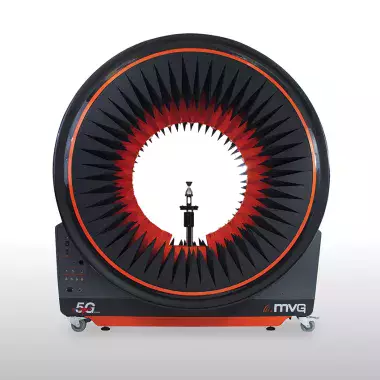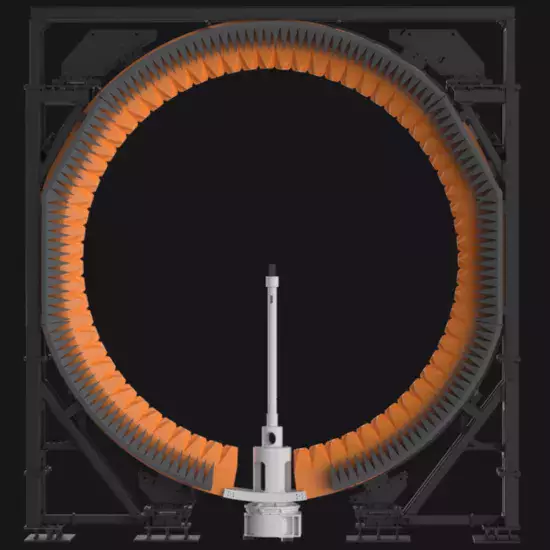
OVERSAMPLING & MULTI-PROBE SPHERICAL NEAR-FIELD MEASUREMENT SYSTEMS
In spherical near-field antenna measurements, the number of samples required for characterization is a function of the frequency and physical dimensions of the DUT (device under test). This number of samples must be consistent with the Nyquist criterion, which defines the spacing between measurement points (samples) on the minimum sphere surrounding the DUT at less than half a wavelength. This sets the minimum quantity of points to be measured. Only in this way will sampling in the near field be sufficient to fully process the far field.
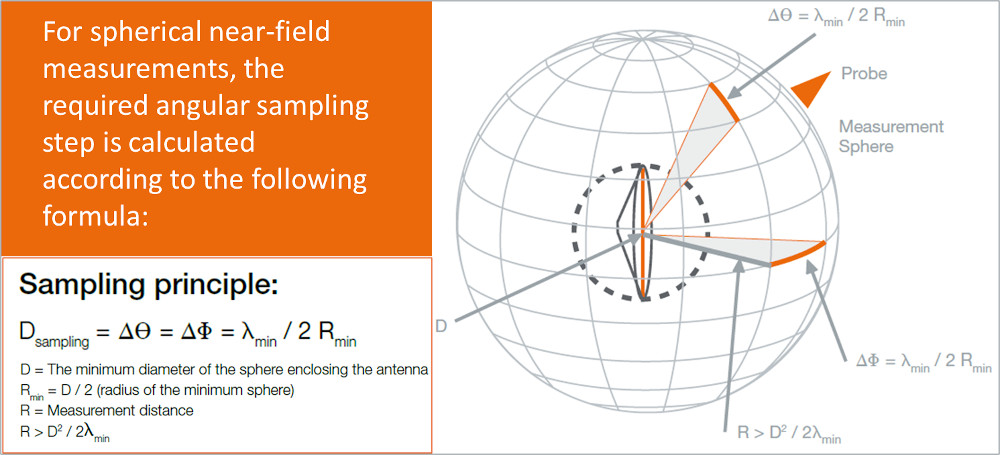
In a spherical antenna measurement performed by a multi-probe test system, the DUT rotates in azimuth while the electromagnetic field surrounding the device is simultaneously scanned by the multi-probe array.
The angular spacing between two probes of an array, for example 5.29° for the MVG SG 64, is suitable for small to medium-sized antenna testing at low frequencies. However, for large antennas and/or antennas operating at higher frequencies such as millimeter wave, more measurement points, or samples, are necessary to respect the Nyquist criterion. Oversampling is key.
Oversampling creates additional virtual probes by a slight mechanical rotation in elevation of the DUT positioner or of the probe array. Both oversampling techniques are applied using MVG patented technology. This rotation (± 2.6° max for the SG 64) plus an additional electronic scan of the probe array, introduces more data collection points, resulting in a complete view of the measurement sphere, and thus an accurate analysis capacity.
Oversampling using the DUT positioner requires tilting the device around its phase center and functions well for relatively light and balanced devices. For large, heavy or oblong antennas and/or operating in millimeter wave frequencies, oversampling via an elevation rotation of the probe array ensures that the DUT does not experience gravitational deflection during the test. This provides the highest accuracy to meet optimal measurement performance.
The SG EVO is the latest MVG SG system integrating oversampling from the probe array. It is most suitable for heavy DUTs and high accuracy applications.
The unlimited oversampling capabilities synchronized with the electronically scanned probe array of the SG Evo or SG 64 give fast and accurate antenna measurement results in minutes.
